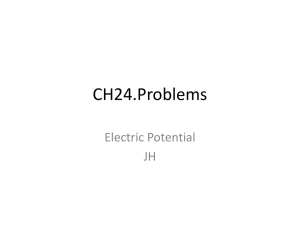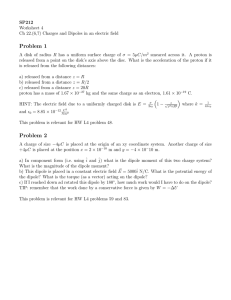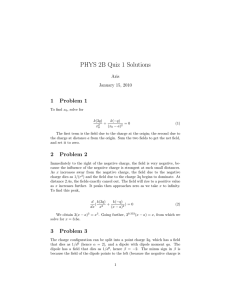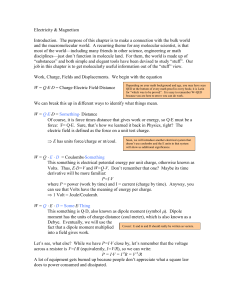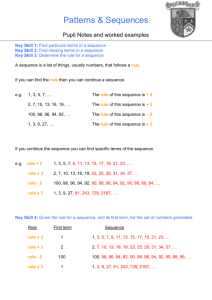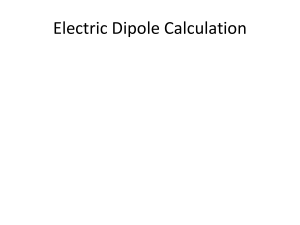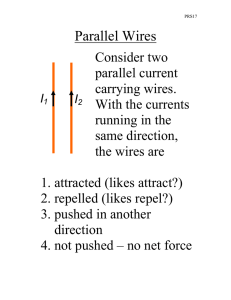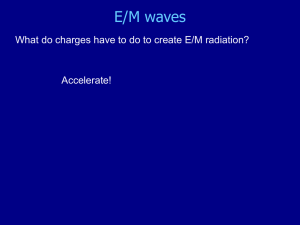Method of Images 1
advertisement
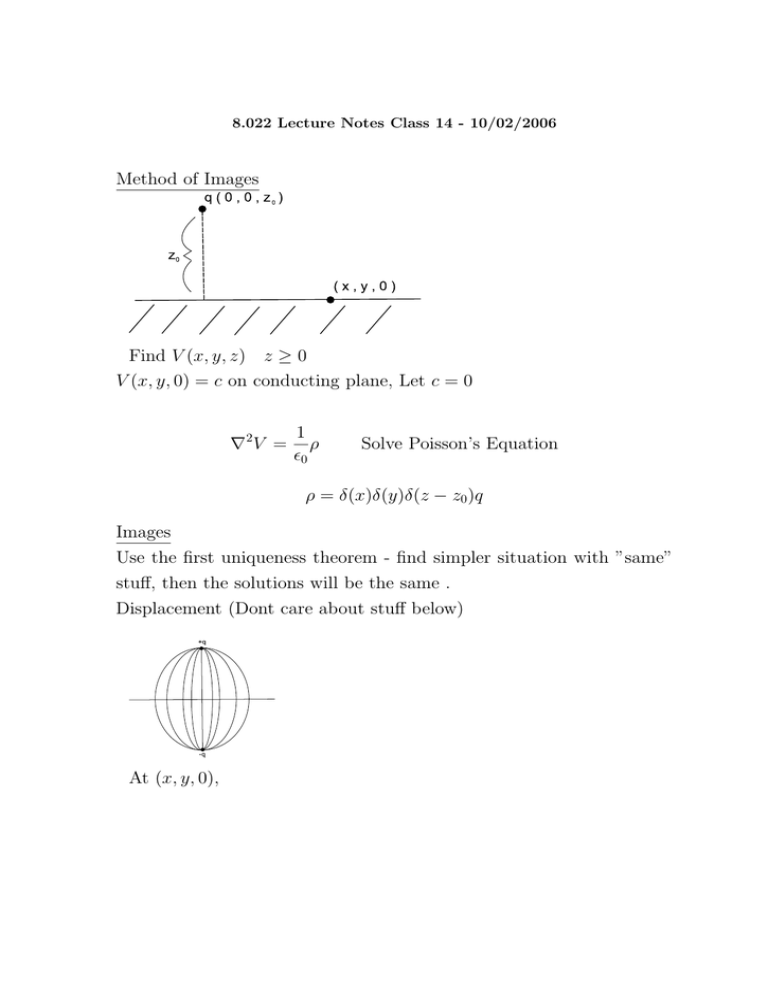
8.022 Lecture Notes Class 14 - 10/02/2006 Method of Images Find V (x, y, z) z ≥ 0 V (x, y, 0) = c on conducting plane, Let c = 0 �2 V = 1 ρ �0 Solve Poisson’s Equation ρ = δ(x)δ(y)δ(z − z0 )q Images Use the first uniqueness theorem - find simpler situation with ”same” stuff, then the solutions will be the same . Displacement (Dont care about stuff below) At (x, y, 0), 2 Vq = V−q = q 4π�0 (x21 +y12 +z02 )1/2 − 4π�0 (x2 +y2q+(−z0 )2 )1/2 1 1 V =0 We have proved that dipole configuration is same as in problem situa­ tion! • Instead of Solving Poisson’s, We solve V for dipole � V = q 1 −1 � +� 4π�0 x2 + y 2 + (z − z0 )2 x2 + y 2 + (z + z0 )2 Works only for z ≥ 0 (Within our V , above S) Electric Field? −�V E= = q 4π�0 � ẑ−z0z) 0 )ẑ √xx̂+yŷ+(z−z − √xx̂+yy+ˆ( 2 2 2 3 2 2 2 (x +y +(z−z0 ) ) (x +y +(z+z0 ) )3 Charge on a surface? � = E E�⊥ = σ �0 n̂ σ �0 σ = �0 E⊥ Why image? Conductor (obeys V = 0) acts as a mirror Integrate surface charge over surface � � 3 � ∞ � 2π 0 = �∞ 0 �∞ � 0 σ(r) · rdφdr 0 2π 2π(r−qz 2 +z 2 )3/2 dr 0 = √qz2 0 2 �� = −q (which works!) r +z0 0 q2 1 F� = − 4π� (using dipole) 2 ẑ 0 (2z0 ) � z0 2 � z0 1 q � · dl = W = F dz ∞ 4π�0 ∞ 4z 02 ��z � q2 1 �� 0 = − 4π�0 4z � ∞ q 2 −1 = · 4π�0 4z0 1 q2 = − 4π�0 2(2z0 ) half of the situation for dipole. Why? energy αE 2 , never had to build up E below plane, so 1 2 4 Use Inversive Geometry (lots of geometric properties hold)

